 2021 BYD Tang II (facelift 2021) Dimensions, Size & Specs
2021 BYD Tang II (facelift 2021) Dimensions, Size & SpecsMeasurements of the 2021 BYD Tang II, engineered for optimal performance and comfort
| Dimensions | |
|---|---|
| Length: | 4870-4900 mm191.7-192.9 in16.0-16.1 ft |
| Width: | 1950 mm76.8 in6.4 ft |
| Width (Opened Mirrors): | 2180 mm85.8 in7.2 ft |
| Height: | 1725 mm67.9 in5.7 ft |
| Trunk Capacity: | 235 liter8.3 cu ft |
| Trunk Capacity (Max): | 1655 liter58.4 cu ft |
| Weight Specifications | |
| Curb Weight: | 2489 kg5487 lbs |
| Maximal permitted Weight: | 3060 kg6746 lbs |
| Roof Load: | 75 kg165 lbs |
| Tire Specifications | |
| Rims Sizes: |
|
| Tire Sizes: |
|
The BYD Tang II (facelift 2021) is a midsize SUV produced by BYD from 2021 to the present, showcasing a modern design update and robust dimensions suitable for family and utility needs. The vehicle length ranges between 4870 mm and 4900 mm (191.7 to 192.9 inches), with a width of 1950 mm (76.8 inches) that increases to 2180 mm (85.8 inches) when the mirrors are opened. Its height stands at 1725 mm (67.9 inches), providing a commanding road presence without compromising urban drivability.
Weighing in at a curb weight of 2489 kg (5,489 lbs) and a maximum permissible weight of 3060 kg (6,744 lbs), the BYD Tang II balances size with a sturdy build. The SUV offers flexible storage capacity, accommodating 235 liters (8.3 cubic feet) of luggage with all seats upright, expanding considerably to 1655 liters (58.4 cubic feet) when the rear seats are folded, perfect for transporting bulky cargo. A roof load capacity of 75 kg (165 lbs) enhances the vehicle's versatility for carrying extra gear.
Rim sizes for the BYD Tang II range from 20 to 22 inches, with tire options including 245/45 R20, 255/50 R20, 265/40 R22, and 265/45 R21, reflecting a focus on both style and performance. This facelifted generation continues to build on BYD’s reputation for innovative design and engineering, offering a sizable yet refined SUV option in the growing electric and hybrid SUV market segment. Whether compared to other midsize SUVs or analyzed for practical space utilization, the BYD Tang II facelift 2021 stands out for its spaciousness, strong build, and adaptable cargo capabilities.
Discover the standout features that make the 2021 BYD Tang II a leader in its class
Have a question? Please check our knowledgebase first.
The BYD Tang II facelift 2021 SUV measures between 4870 mm and 4900 mm in length (approximately 191.7 to 192.9 inches or 15 feet 11.7 inches to 16 feet 0.9 inches). Its width is 1950 mm (76.8 inches or 6 feet 4.8 inches) measured without mirrors, and with mirrors opened, the width increases to 2180 mm (85.8 inches or 7 feet 1.8 inches). The vehicle's height is 1725 mm (67.9 inches or roughly 5 feet 7.9 inches). These dimensions place the BYD Tang II facelift in the midsize SUV category, offering a spacious presence while maintaining a balanced stance on the road.
The BYD Tang II facelift 2021 has a curb weight of 2489 kilograms (approximately 5,488 pounds), which is the weight of the vehicle without passengers or cargo but with standard equipment and necessary fluids. Its maximum weight or gross vehicle weight rating (GVWR) is 3060 kilograms (around 6,745 pounds). This maximum weight includes the curb weight plus passengers, cargo, and any additional equipment, meaning the vehicle is designed to safely carry up to about 571 kilograms (1,257 pounds) of extra load beyond its curb weight.
The luggage capacity of the BYD Tang II facelift 2021 with the rear seats upright is 235 liters (about 8.3 cubic feet), providing sufficient space for everyday shopping and small luggage needs. When the rear seats are folded down, the capacity expands dramatically to 1655 liters (approximately 58.4 cubic feet), offering ample cargo room for larger items, trips, or transporting bulky goods. This flexible storage solution enhances the SUV's practicality, making it well-suited for families and those needing versatile cargo space.
The roof load capacity for the BYD Tang II facelift 2021 SUV is rated at 75 kilograms (165 pounds). This means you can safely mount roof racks, cargo boxes, bicycles, or other roof gear up to this weight without compromising vehicle safety or structural integrity. Exceeding this weight limit can affect vehicle handling, stability, and could cause damage to the roof or roof rack system. It's important to distribute the load evenly and secure items properly to avoid shifting during travel.
The BYD Tang II facelift 2021 offers multiple rim size options: 20-inch, 22-inch, and 21-inch rims. Correspondingly, tire sizes include 245/45 R20, 255/50 R20, 265/40 R22, and 265/45 R21. Larger rims and wider tires typically provide better grip and improved handling characteristics, particularly for sporty driving or in challenging road conditions. However, bigger rims with low-profile tires might reduce ride comfort slightly due to less sidewall cushioning. The range of options allows buyers to choose a balance between style, ride comfort, and performance.
A typical residential garage door opening measures roughly 2.4 meters (about 7 feet 10.5 inches) in width and 2 meters (6 feet 7 inches) in height. The BYD Tang II facelift 2021, with a width of 1.95 meters (6 feet 4.8 inches) excluding mirrors and 2.18 meters (7 feet 1.8 inches) with mirrors open, will fit comfortably with mirrors folded or in narrow garages, but may require folding mirrors for tight fits. Its height of 1.725 meters (5 feet 7.9 inches) poses no height issue, and length between 4.87 and 4.90 meters (approximately 16 feet) fits easily into most standard garage lengths, which typically exceed 5 meters (16.4 feet). Therefore, it fits in standard garages but attention is needed for mirror clearance.
Compared to its predecessor Tang I, the BYD Tang II facelift 2021 is slightly larger in overall dimensions, contributing to improved interior space and road presence. While exact figures for Tang I vary by model year, Tang II's length of up to 4900 mm (16 feet 0.9 inches) is marginally longer, its width of 1950 mm (76.8 inches) is wider, and the height of 1725 mm (67.9 inches) is similarly taller or comparable. Additionally, Tang II benefits from updated styling and possibly improved aerodynamics. These dimensional enhancements reflect BYD's emphasis on offering a more spacious and comfortable SUV experience over the first generation.
In the midsize SUV category, the BYD Tang II facelift 2021 holds competitive dimensions with its length around 4.9 meters (16 feet), width of 1.95 meters (6 feet 4.8 inches), and generous cargo volumes (up to 1655 liters or 58.4 cubic feet with seats folded). Compared to popular midsize SUVs like the Toyota Highlander or Ford Edge, Tang II offers similar or slightly larger cargo space, albeit its curb weight on the heavier side at 2489 kg (5,488 lbs). The roof load capacity and wheel size options are also competitive. Overall, the Tang II delivers strong cargo versatility and width that can compete well with established players in its class.
The BYD Tang II facelift 2021 typically offers seating for seven passengers across three rows, which is common for midsize SUVs. Its enhanced exterior dimensions translate into more generous legroom, headroom, and shoulder room inside, particularly in the first and second rows. While the third row is suitable mainly for children or short journeys due to slightly reduced space, overall the SUV is designed with family and versatility in mind. The interior space combined with flexible seating and cargo arrangements support varied passenger and load combinations effectively.
The 2021 facelift of the BYD Tang II introduced a range of changes focusing on styling, technology, and efficiency. Exterior updates include refreshed front and rear designs with revised headlights, taillights, and bumpers enhancing modern appeal. Inside, updated infotainment systems, enhanced driver assistance features, and improved material quality contribute to better comfort and convenience. Additionally, some powertrain tuning may optimize efficiency and performance. These updates aim to keep the Tang II competitive in the rapidly evolving midsize SUV market, offering buyers a modern, technologically advanced option.
Discover similar sized cars.
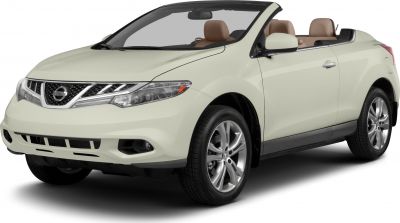
| Production: | 2010-2014 |
|---|---|
| Model Year: | 2011 |
| Length: | 4829 mm190.1 in |
| Width: | 1892 mm74.5 in |
| Height: | 1681 mm66.2 in |
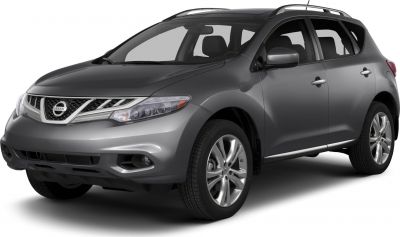
| Production: | 2010-2014 |
|---|---|
| Model Year: | 2010 |
| Length: | 4860 mm191.3 in |
| Width: | 1885 mm74.2 in |
| Height: | 1720 mm67.7 in |
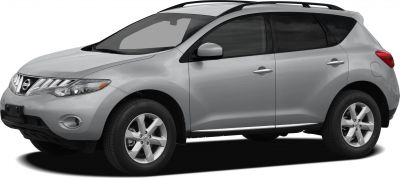
| Production: | 2008-2010 |
|---|---|
| Model Year: | 2009 |
| Length: | 4860 mm191.3 in |
| Width: | 1885 mm74.2 in |
| Height: | 1720 mm67.7 in |
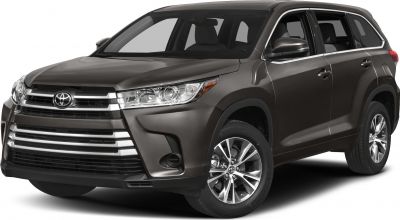
| Production: | 2016-2019 |
|---|---|
| Model Year: | 2017 |
| Length: | 4890 mm192.5 in |
| Width: | 1925 mm75.8 in |
| Height: | 1770 mm69.7 in |
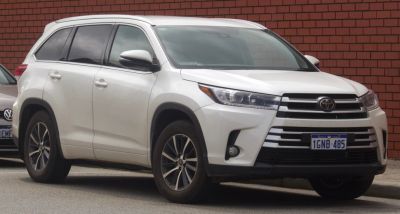
| Production: | 2016-2019 |
|---|---|
| Model Year: | 2017 |
| Length: | 4890 mm192.5 in |
| Width: | 1925 mm75.8 in |
| Height: | 1730 mm68.1 in |
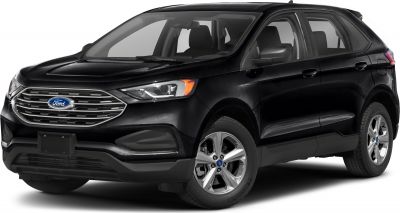
| Production: | 2021-2023 |
|---|---|
| Model Year: | 2021 |
| Length: | 4878 mm192.0 in |
| Width: | 1925 mm75.8 in |
| Height: | 1734-1770 mm68.3-69.7 in |

| Production: | 2024-present |
|---|---|
| Model Year: | 2025 |
| Length: | 4920 mm193.7 in |
| Width: | 1930 mm76.0 in |
| Height: | 1760 mm69.3 in |

| Production: | 2013-2018 |
|---|---|
| Model Year: | 2014 |
| Length: | 4886-4908 mm192.4-193.2 in |
| Width: | 2184 mm86.0 in |
| Height: | 1762 mm69.4 in |
